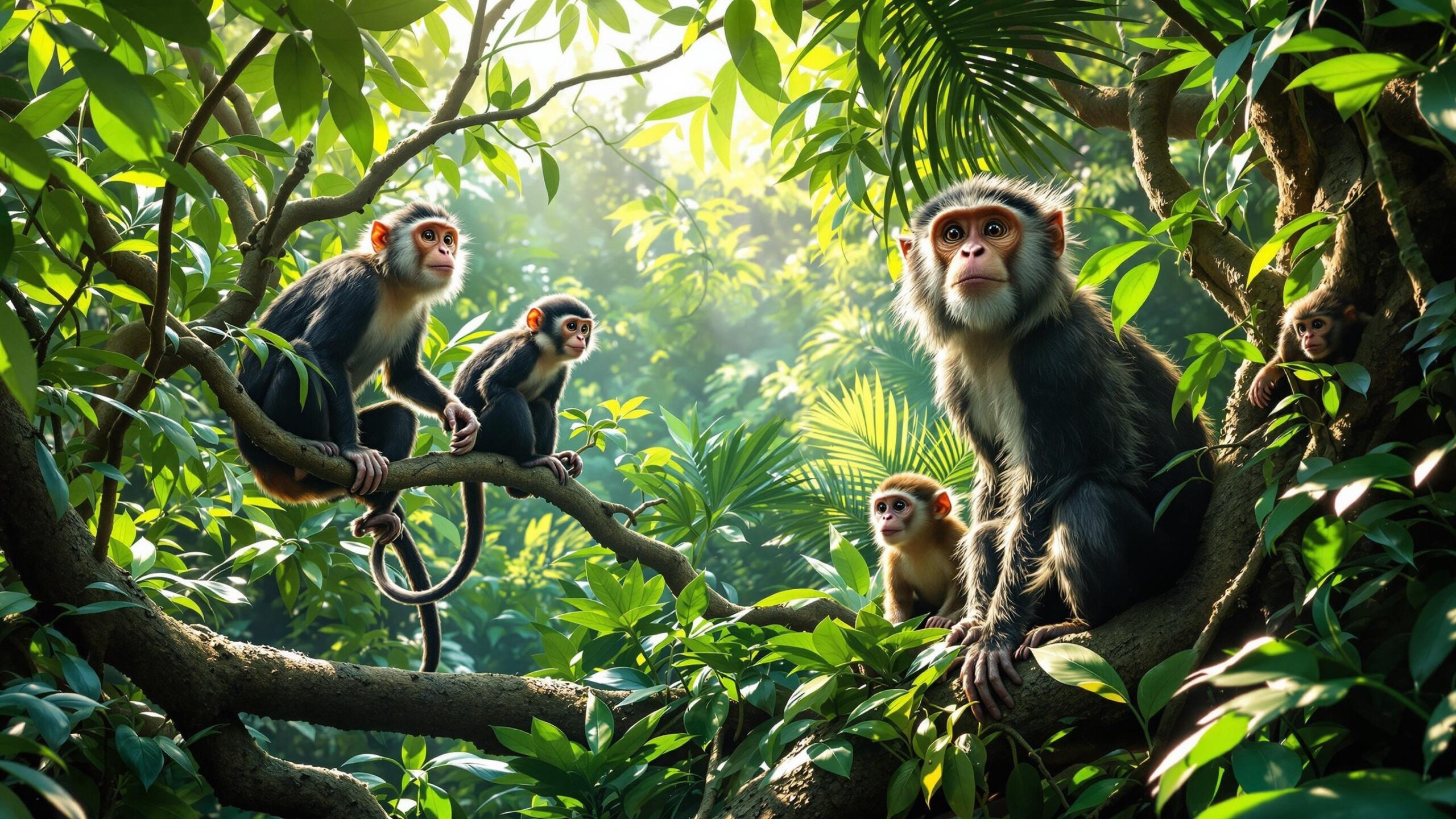Monkeys: The Lively Innovators of the Animal Kingdom
In the sunlit treetops of a tropical rainforest, a group of monkeys chatter and leap through the branches in a mesmerizing display of energy, agility, and social complexity. From the bustling troops of macaques in Himalayan foothills to the acrobatic spider monkeys of the Amazon, monkeys inhabit nearly every corner of the tropical world. These creatures are not only among the most widespread primates on Earth but also among the most fascinating. With their expressive faces, intricate social structures, and diverse adaptations, monkeys are master survivors, playing vital roles in both ecological systems and scientific discovery. Monkeys belong to the order Primates and are classified as simians, a group that includes monkeys, apes, and humans. There are over 260 recognized species of monkeys, ranging from the tiny pygmy marmoset of South America to the large and powerful mandrill of Central Africa. They are generally divided into two major groups: Old World monkeys, native to Africa and Asia, and New World monkeys, found throughout Central and South America. This division is not only geographical but also anatomical and behavioral, reflecting millions of years of divergent evolution.

Baboon
Baboon: The Bold, Brainy, and Social Monkeys of Africa Few animals embody the raw drama of the African savanna quite like the baboon. These intelligent, adaptable, and highly social primates belong to the genus Papio, and they are among the most widespread and studied monkeys in the world. Found across a diverse range of habitats in sub-Saharan Africa and parts of the Arabian Peninsula, baboons have captured the fascination of

Capuchin
Capuchin Monkey (Cebus and Sapajus): The Clever Clowns of the Canopy From the thick rainforests of Central and South America to the sunlit edges of tropical woodlands, a flash of fur and a burst of chatter signal the presence of one of the most intelligent and agile primates in the New World. The Capuchin monkey, belonging to the genera Cebus (gracile capuchins) and Sapajus (robust capuchins), is a small but
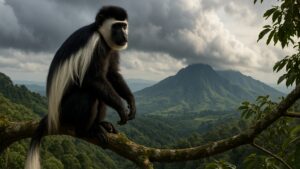
Colobus Monkey
Colobus Monkey: The Graceful Leapers of the African Forests Hidden among the canopy of Africa’s lush forests, a striking black-and-white silhouette bounds gracefully from branch to branch. This is the colobus monkey, a leaf-eating marvel of the primate world known for its distinctive fur, quiet demeanor, and agile movement. Belonging to the genus Colobus, these monkeys are among the most specialized and visually unique members of the Old World monkey
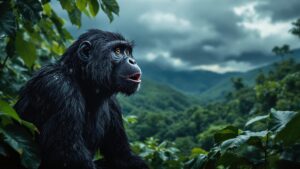
Howler Monkey
Howler Monkey (Alouatta): The Echoing Voice of the Jungle As dawn breaks over the rainforests of Central and South America, a deep, resonating roar cuts through the morning mist. It echoes for miles, vibrating through the canopy like a prehistoric trumpet. This is the unmistakable voice of the Howler Monkey, one of nature’s loudest land mammals and a true icon of the neotropical wilderness. Known for their booming calls, tree-top

Macaque
Macaque: The Bold and Brilliant Primates of the Old World From the bustling streets of South Asian cities to the snow-covered forests of Japan and the tropical rainforests of Southeast Asia, one primate has consistently astonished scientists and enchanted casual observers alike—the macaque. Belonging to the genus Macaca, these Old World monkeys are among the most adaptable, diverse, and widespread non-human primates on Earth. With over 20 recognized species, macaques

Mandrill
Mandrill: The Jungle’s Colorful Enigma Deep within the dense rainforests of central Africa thrives one of the most visually striking primates on Earth—the mandrill. Known for its extraordinary coloration, commanding presence, and intriguing behavior, the mandrill (Mandrillus sphinx) captures both the eye and the imagination. Neither monkey nor baboon in the strictest sense, the mandrill is a complex and captivating creature that defies easy categorization. With a face painted
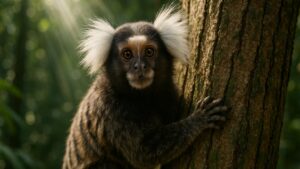
Marmoset
Marmoset: The Tiny Primate with a Big Personality Deep within the verdant forests of South America, a curious and energetic little primate flits from branch to branch with remarkable agility and boundless charm. Known for its expressive face, sharp chirps, and squirrel-like antics, the marmoset (scientific name: Callithrix, with multiple species under this genus) is one of nature’s most captivating miniature marvels. Despite their diminutive size, marmosets possess complex social
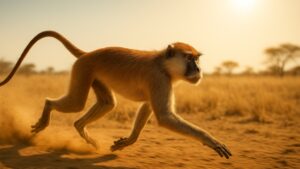
Patas Monkey
Patas Monkey: Africa’s Speedy Ground-Dwelling Primate Across the sun-drenched savannas and grasslands of sub-Saharan Africa, a remarkable primate races across the terrain with astonishing agility and speed. This is the Patas monkey, scientifically known as Erythrocebus patas. Unlike most of its arboreal relatives, the Patas monkey is an evolutionary outlier, having adapted to a life on the ground rather than the treetops. Its lean build, long limbs, and agile form

Proboscis Monkey
The Proboscis Monkey: Nature’s Long-Nosed Wonder In the dense mangrove forests and meandering riverbanks of Borneo, a primate unlike any other swings through the trees and forages among the undergrowth: the Proboscis Monkey (Nasalis larvatus). With its comically oversized nose, striking coloration, and pot-bellied physique, the Proboscis Monkey is one of the most peculiar and endearing creatures of the primate world. Yet behind its bizarre appearance lies a story of
Biology and Intelligence: How Monkeys Stand Out
What defines a monkey? Beyond the energetic movements and mischievous curiosity, monkeys are remarkably intelligent, social, and adaptable. Most species have forward-facing eyes for stereoscopic vision, grasping hands and feet, and flexible limbs that allow for swinging, climbing, and in some cases, walking or running with surprising agility. Their brains are relatively large for their body size, supporting advanced problem-solving, memory, tool use, and even a sense of self in some species. Monkeys have diverse diets, typically omnivorous, ranging from fruits, seeds, leaves, and insects to small animals and bird eggs. Their social behaviors are equally varied, with complex hierarchies, grooming rituals, territorial calls, and alliances that reflect a high degree of emotional intelligence. Monkeys are also vocal and communicative. Some species have distinct alarm calls for different predators, while others have gestural languages and nuanced expressions. Their ability to learn, mimic, and even teach one another new behaviors makes them exceptional subjects for understanding cognition and culture in non-human animals.
Old World Monkeys: The Versatile Veterans of Africa and Asia
Old World monkeys belong to the family Cercopithecidae and include some of the best-known primates, such as baboons, macaques, and colobus monkeys. These species are primarily native to Africa and Asia and tend to have narrow, downward-facing nostrils, as well as opposable thumbs. Unlike their New World counterparts, most Old World monkeys do not have prehensile tails. Baboons are among the largest and most terrestrial monkeys, often found in open savannahs. They live in large, hierarchical troops and exhibit social behaviors that include coalition-building, grooming, and even deceptive tactics. Baboons are omnivorous and have been observed using tools, raiding crops, and adapting well to human-altered landscapes. Macaques are incredibly diverse and occupy habitats ranging from snowy mountain regions to hot, urban environments. Japanese macaques, or snow monkeys, are famous for bathing in hot springs, while rhesus macaques thrive in cities across India. Macaques are extremely social and intelligent, making them common subjects in psychological and medical research. Colobus monkeys and langurs are primarily arboreal and have specialized digestive systems that allow them to process leaves and unripe fruits. Their vibrant coats and graceful movements make them iconic figures in many of Africa and Asia’s forests.
New World Monkeys: The Agile Artists of the Americas
New World monkeys, classified under the parvorder Platyrrhini, are found throughout Central and South America and include species such as capuchins, howler monkeys, tamarins, marmosets, and spider monkeys. These monkeys are generally smaller, with flatter noses, and most have long, prehensile tails that serve as a fifth limb for grasping branches. Capuchins are perhaps the most intelligent of the New World monkeys. Known for their tool use and problem-solving skills, they are often seen cracking nuts with stones or using sticks to fish for insects. Capuchins live in complex social groups and exhibit strong hierarchies, cooperation, and teaching behaviors. Howler monkeys are the vocal giants of the jungle, producing deep, resonating calls that can be heard from miles away. These calls serve to mark territory and keep troops from clashing. Despite their fearsome sound, howlers are mostly leaf-eaters and live in tightly bonded groups. Spider monkeys, with their long limbs and tails, are acrobats of the canopy. They can move with astonishing grace and speed, often traveling up to a kilometer a day in search of fruit. Their social structures are fluid, with fission-fusion group dynamics that allow individuals to split off and regroup based on food availability and social bonds. Tamarins and marmosets are among the smallest monkeys, often weighing less than a pound. They typically live in cooperative family groups and often give birth to twins. Their facial expressions, chirping vocalizations, and elaborate grooming behaviors make them endlessly engaging to observe.
Leaf Monkeys, Swamp Monkeys, and Other Fascinating Subgroups
Beyond the primary categories, there are numerous specialized monkey groups adapted to unique ecological niches. Leaf monkeys (or lutungs) of Southeast Asia have developed multi-chambered stomachs to digest cellulose-rich plant material and live in small troops high in the forest canopy. Swamp monkeys and Allen’s swamp monkeys, native to the Congo Basin, are semi-aquatic and have webbed toes, allowing them to wade and swim through marshy environments. They feed on aquatic plants, fruits, and insects, and often use water as an escape route from predators. Snub-nosed monkeys of China and northern Vietnam are cold-climate specialists with thick fur and flattened faces. They live at high elevations and survive harsh winters by foraging for lichens, tree bark, and frost-resistant plants. Mandrills, the world’s largest monkeys, are known for their dramatic facial coloration and powerful bodies. Native to Central African rainforests, they live in massive troops of hundreds and exhibit a rich repertoire of facial expressions and vocalizations.
Monkeys in Culture, Science, and Conservation
Throughout history, monkeys have played prominent roles in human culture and mythology. In Hinduism, Hanuman is a revered monkey god symbolizing loyalty and courage. In Chinese folklore, the Monkey King is a clever and mischievous hero. Monkeys have also appeared in literature, film, and art as symbols of playfulness, wisdom, and transformation. Scientifically, monkeys have advanced our understanding of neurology, behavior, and medicine. Research involving rhesus macaques contributed to the development of vaccines and studies on memory, social behavior, and emotional health. While this work has yielded critical discoveries, it has also prompted important ethical discussions about animal welfare and the future of primate research. Monkeys are also central to the global wildlife trade and eco-tourism industries. While many species benefit from protected reserves and conservation funding, others suffer from habitat destruction, hunting, and capture for illegal trade. Education, responsible tourism, and community-based conservation are essential for protecting these animals and their environments.
Monkeys as Ecosystem Engineers
Monkeys are more than just charismatic mammals—they are vital contributors to forest ecosystems. As frugivores and seed dispersers, they help maintain plant diversity and forest structure. Their movements through the canopy distribute seeds far from parent trees, reducing competition and increasing the chance of survival for many plant species. They also control insect populations, pollinate flowers, and play a role in nutrient cycling. In regions where monkey populations have declined due to human impact, researchers have documented cascading effects on forest composition, demonstrating the ecological importance of maintaining healthy monkey populations. By shaping the environments they inhabit, monkeys are true ecosystem engineers, their daily lives intertwined with the survival of countless other species.
Conservation Status and Global Challenges
Despite their adaptability, monkeys face a range of threats. Habitat loss due to agriculture, logging, and urban expansion is the most pressing issue. Roads fragment habitats and isolate populations, while hunting and the exotic pet trade remove individuals from the wild. Climate change adds an additional layer of stress, altering food availability and ecosystem stability. Many monkey species are now listed as vulnerable, endangered, or critically endangered by the IUCN. Conservation efforts include the creation of protected areas, captive breeding programs, anti-poaching initiatives, and international legislation such as CITES, which regulates trade in endangered species. Public awareness and education campaigns are crucial. As more people become engaged with primate conservation, support for habitat protection and ethical wildlife practices grows. Citizen science, eco-tourism, and local stewardship have proven effective in many regions.
Why Monkeys Matter and What You Can Do
Monkeys matter for many reasons. They are intelligent beings with complex emotions, social lives, and cultures. They are ecological guardians, ensuring the health and regeneration of forests. They are teachers, helping us understand cognition, communication, and cooperation across species. Their decline is a warning sign not just for tropical ecosystems but for the interconnected health of our planet. By learning about monkeys and sharing their stories, we foster empathy and action. Supporting sustainable products, donating to reputable conservation organizations, and avoiding the purchase of exotic pets are just a few ways to make a difference. The world of monkeys is endlessly diverse and deeply inspiring. Whether it’s a howler monkey’s morning roar, a baby capuchin clinging to its mother, or a mandrill striding confidently through the forest, every monkey offers a glimpse into nature’s creativity and resilience. As you explore the many species and stories within the monkey kingdom, let curiosity guide you toward deeper understanding and purpose. This journey doesn’t end here—it’s just the beginning of a lifelong connection with the most lively and innovative primates on Earth.

